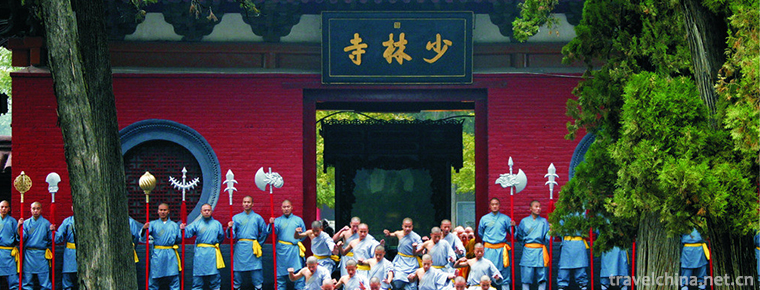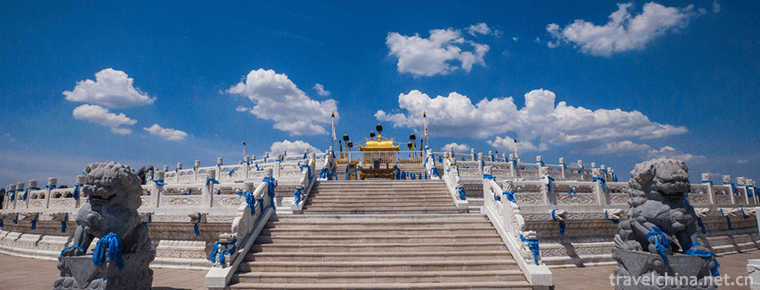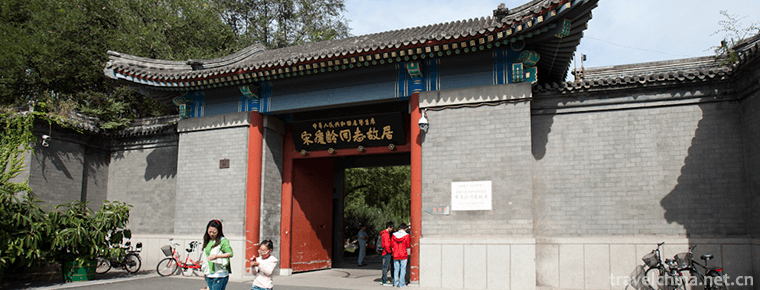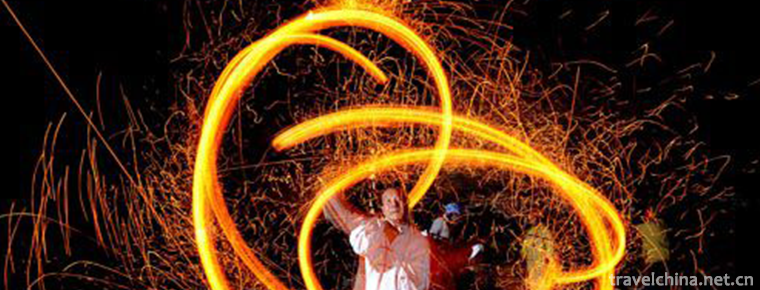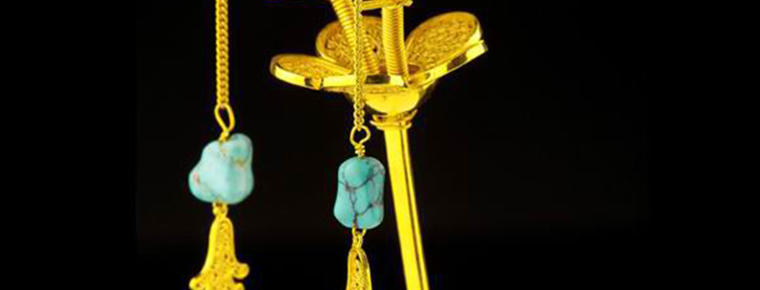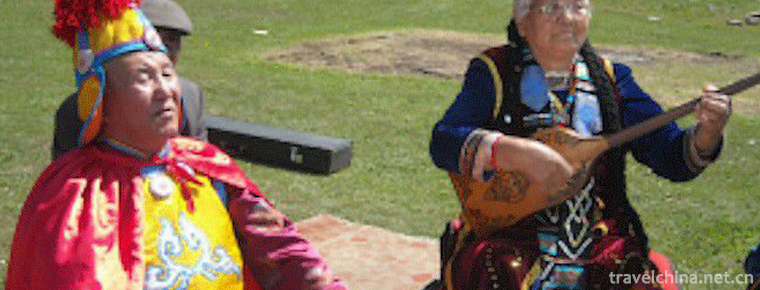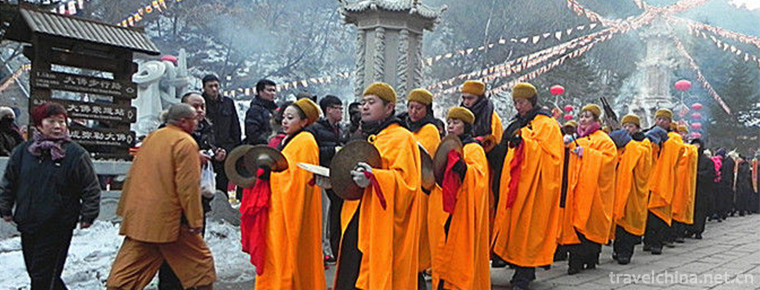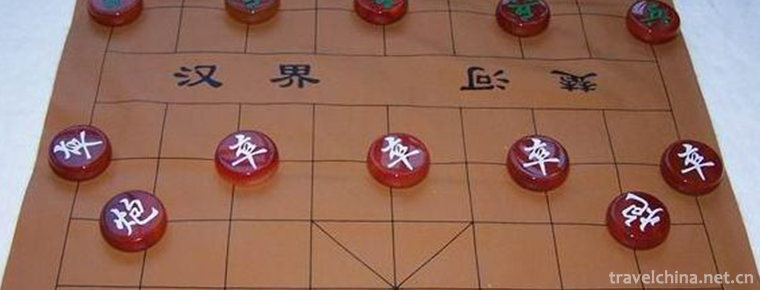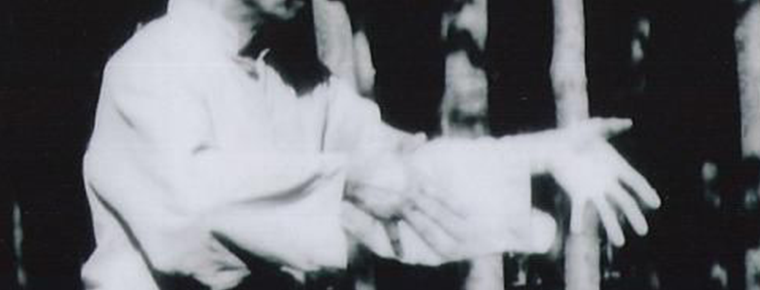Cangzhou Lazi
Cangzhou Lazi
Cangzhou Laozi is a traditional folk dance with strong local characteristics in the central area of Hebei Province. Laozi is one of the representative folk dances in Hebei Province. It spreads in Cangzhou, especially in Cangxian and Nanpi counties. It has a history of more than 150 years. In winter, when the farmers are free, they rehearse and perform around the fifteenth day of the first lunar month to show the joy of celebrating the harvest and leaving the old to welcome the new.
In June 2008, Cangzhou Luozi declared by Nanpi County of Hebei Province was listed in the second batch of national intangible cultural heritage list with the approval of the State Council.
Heritage serial number: 643 III-46.
historical origin
According to Cangxian County Chronicle of Hebei Province, Laozi is a small farm in the big Yangko, which originated in Jiaqing and Daoguang years of the Qing Dynasty (1796-1821). Traditionally, women walk on Cun stilts (also known as Cun stilts), hold flower fans or bamboo boards, and men beat bully whips with their hands. Laozi's dance is characterized by fewer fans and flowers, more dancing postures and shapes, paying attention to the beauty of curves and paying attention to charm. The style of fan dancing is natural and unrestrained. The action range of board dancing is large, the rhythm changes a lot, and it is very bright.
artistic characteristics
Form of performance
Wen Laozi mainly composed of songs and dances, often performing several folk songs together. In the equipments of props, whips, boards and fans are interlaced with each other, and only fans are used for performances. The local people call it Wen Laozi or Xiao Fengyuan. After the Revolution of 1911, women's foot binding began to be liberated, and men dressed as women began to be eliminated. As a result, the movements of Laozi dance have been enriched and developed accordingly. On the basis of Wen Laozi, some movements and techniques in opera have been properly absorbed, which blend with the movements of Laozi dance, adding a warm, robust, cheerful and bold atmosphere, strengthening the elements of dance and martial arts, and reducing the composition of songs accordingly. On props, only whip and board are used, no fan is used. Locals call it Wu Luozi or Feng Yangge.
Art schools
The first group was Yang Fa-tzu, who performed only four whips at the earliest stage, and then changed to four whips and four boards. Later, the performances of fans were added, which were divided into five whips, three boards and two fans. In the process of handing down from generation to generation, each generation of artists has made different degrees of improvement and development of Yang Fa Laozi, making it increasingly perfect, leaving valuable folk art heritage for future generations.
The other is the cap school. At first there was only a martial field accompaniment, then a literary field accompaniment was added. The Hat Family did not perform with fans, but only with two whips and eight boards. Cangzhou people are fond of practicing martial arts and have been influenced by martial arts for a long time. Therefore, it is also evidently reflected in the dance of falling sons. The basic movements of male performers in Fall Zi Dance mainly come from the single-knife style in Wushu. For example, it is the most basic action of male actors. "Xubu" is a triangular route, which is called "triangular riveting" by the old artists. That is to say, the pace is steady, just like riveting on the ground. The actresses'movements such as "drawing board", "winding head board", "pedaling" and "empty step" are also close to those of Wushu.
Traditional programs
The traditional programs of Laozi mostly express the hard life of the working people in the old society, as well as love stories and people's longing for freedom, happiness and a better life, such as Jasmine Flower, Kite Flying, Sighing Lover, Embroidered Handkerchief, Nigu Sifan, etc. Among them, "Rongli Flower" and "Kite Flying" are processed and sorted out to be more beautiful and moving, and become the lasting reserved programs in the dance arena.
Inheritance status
Zhou Shutang, the late famous folk dancer, made outstanding contributions in inheriting and developing Cangzhou Laozi. Zhou Shutang studied art in "Laozi Fang" since childhood. After more than forty years of training, he has become an art genre of Laozi Dance. His dancing rhythm is characterized by a prominent depiction of the female "three bends" dance posture: the head is crooked, the waist is twisted, the legs are curved, the lines are beautiful, the charm is strong, making people feel elegant, beautiful and dignified. In terms of dance steps, it absorbs the advantages of Chinese classical dance and brotherly national dance. Zhou Shutang believes that if folk dance does not develop and innovate, there will be no vitality. In order to develop the slab dance and fan dance in Laozi dance, he recorded many dance vocabulary and dance movement rhythm from folk dances of various nationalities. After some analysis and research, he melted many dance language into the dance, and then processed more than 20 sets of fan flower and slab dance action combinations. These magnificent and varied movements have enhanced the expressive force of Laozi dance and developed the traditional art of Laozi dance.

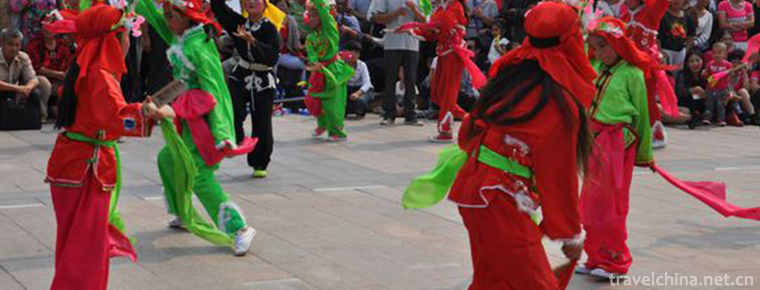
-
Shaolin Temple
Shaolin Temple is the birthplace of Chinese Buddhist Zen ancestors and Kungfu. It is now a world cultural heritage, a national key cultural relics protection unit.
Views: 121 Time 2018-11-11 -
Genghis khan mausoleum tourist area
Genghis khan mausoleum tourist area, also known as Chengling Tourist Area, commonly known as the Eastern Union Scenic Area (not Genghis Khanling).
Views: 331 Time 2018-12-01 -
Memorial of Song Qinglings Former Residence in Shanghai
Song Qingling's former residence in Shanghai is the place where Song Qingling lived and lived for a long time. Qingling came to live here in the spring of 1949 and ushered in the liberation of Shangha.
Views: 154 Time 2019-02-13 -
Wulingyuan
Wulingyuan Scenic Spot is located in the northwest of Hunan Province, central China. Its longitude is 110 20'30 ~110 41'15 and latitude is 29 16'25 ~29 24'25.
Views: 150 Time 2019-02-24 -
dongjing music
Dongjing music is a very ancient traditional instrumental music, which originated in Sichuan Province in the Song Dynasty and is now popular in Sichuan Province.
Views: 118 Time 2019-04-28 -
Wind and Fire Meteor
Fenghuo Meteor is a traditional folk performing art which combines acrobatics and martial arts. It is one of the first intangible cultural heritages in Shanxi Province. .
Views: 381 Time 2019-04-29 -
Making Skills of Filament Mosaic
Silk mosaic is one of the traditional handicraft techniques in China. Gold, silver and copper are drawn into silk, and various decorations such as jewelry and utensils are made by various techniques..
Views: 138 Time 2019-05-04 -
Mongolian Topshore Music
Topshore is a unique short-necked woody plucked string instrument of Mongolian nationality in Xinjiang. It is beautiful in shape, simple in manufacture, graceful in timbre and easy to carry. It is esp.
Views: 329 Time 2019-06-04 -
Qianshan Temple Music
Qianshan, located 20 kilometers southeast of Anshan City, Liaoning Province, is one of the most famous scenic spots in the country. In the northeast, Qianshan is as famous as Changbai Mountain in Jili.
Views: 152 Time 2019-06-10 -
Chess Xiangqi
Chess, also known as "Chess", Chinese chess (English name Chinese chess), Chinese traditional chess puzzle game, has a long history in China, belongs to a two-person confrontational game, be.
Views: 163 Time 2019-07-06 -
Yi Quan
Yiquan, also known as Dacheng Quan, is one of the traditional Chinese boxing and belongs to Neijia Quan. It comes from mind boxing. Including: standing pile, trial, footwork, strength, sound test, pus.
Views: 169 Time 2019-07-13 -
Catering and shopping in Chengdu Giant Panda Base
Chengdu Research Base of giant panda breeding has four souvenir shops: "original fashion gift shop of giant panda sun delivery room", "gift shop of giant panda cub playground", "museum gift shop" and "charm theater gift house". The wooden house structure and .
Views: 108 Time 2020-12-13
